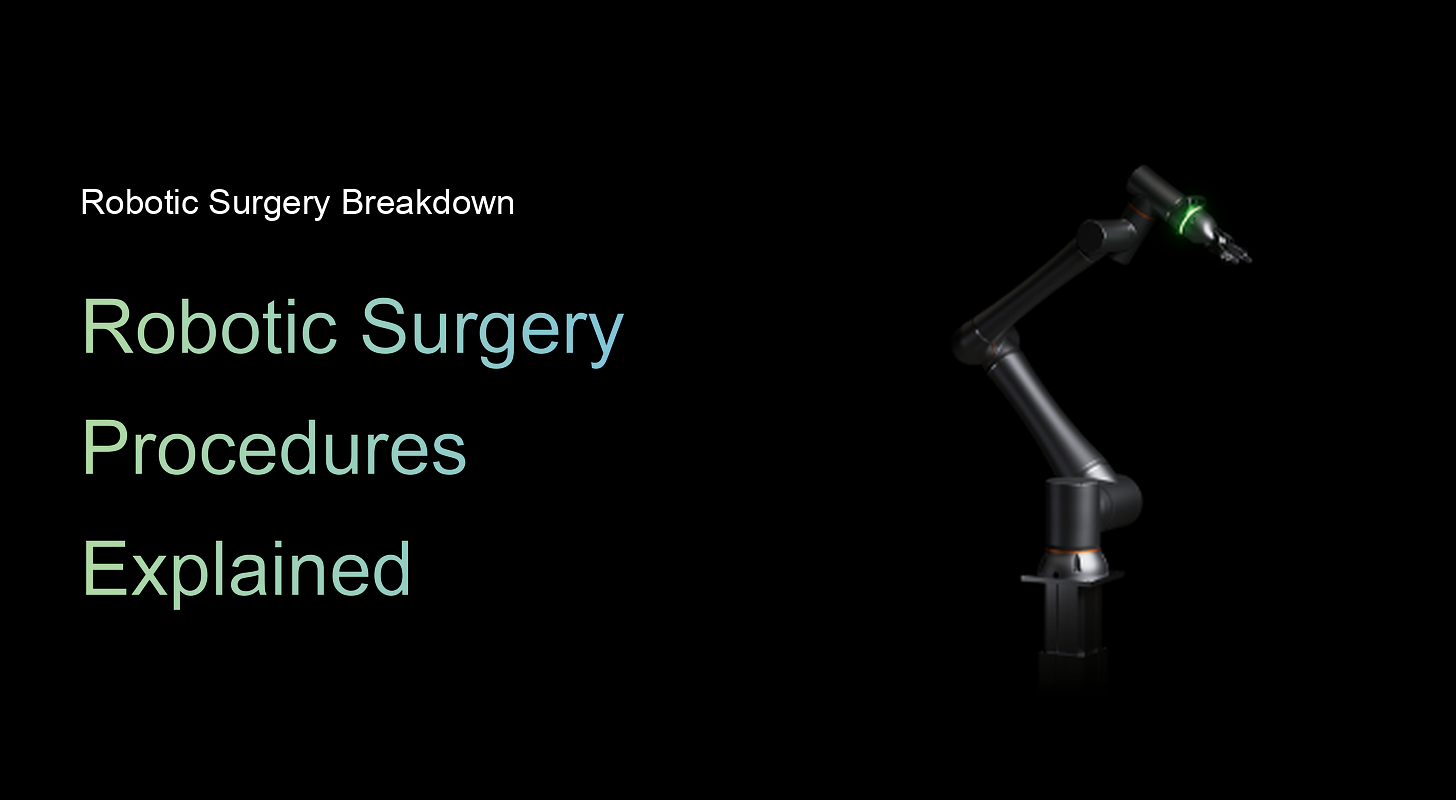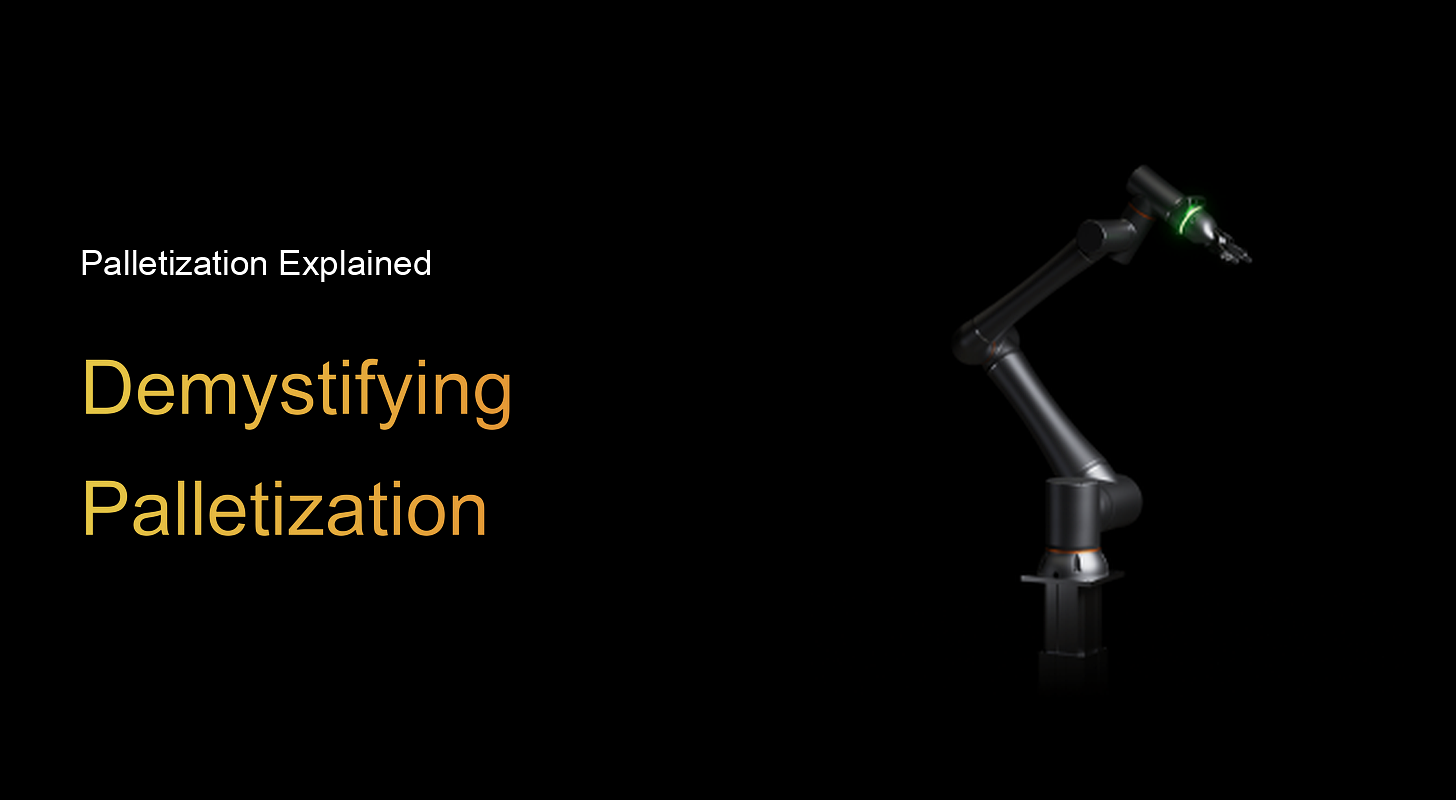Surgical robotics companies create advanced systems that help surgeons perform minimally invasive procedures. With over 12 million surgeries already, these robots are changing how operations in urology, gynecology, orthopedics, and more are done. Patients often see smaller cuts, quicker recovery, and greater precision in the operating room.
Top 8 surgical robotic companies: TL;DR
What are surgical robotics companies?
Surgical robotics companies design robots and related technologies to help surgeons perform minimally invasive procedures. Their focus is on improving precision, reducing invasiveness, and delivering better patient outcomes.
These systems pair mechanical accuracy with advanced software, allowing surgeons to work through small incisions while viewing the surgical site in high‑definition 3D.
The types of surgeries covered vary by system, but most focus on areas like:
- Urology and gynecology
- Orthopedic and spinal surgery
- General and colorectal surgery
- Thoracic and bariatric procedures
These companies offer an ecosystem of training programs, specialized instruments, service contracts, and software upgrades. The benefits in healthcare are enhanced dexterity, motion scaling, tremor reduction, and better visualization, all contributing to improved patient outcomes and shorter hospital stays.
Best surgical robotics companies
1. Intuitive Surgical

Intuitive Surgical remains the most dominant surgical robotics company in the world in 2025. With over 8,000 da Vinci units installed globally and more than 12 million procedures performed, it has set the benchmark for robotic-assisted surgery.
The da Vinci product family includes multiple models:
- da Vinci SP (single-port surgery through a single small incision)
- da Vinci X (a more cost-effective alternative for focused procedures)
- da Vinci Xi (the flagship system for complex multi-quadrant procedures)
Each system uses proprietary instruments and is backed by Intuitive’s strong training, service, and analytics ecosystem. Hospitals also pay ongoing fees for accessories and maintenance, making it one of the most lucrative and capital-intensive platforms on the market.
2. Medtronic
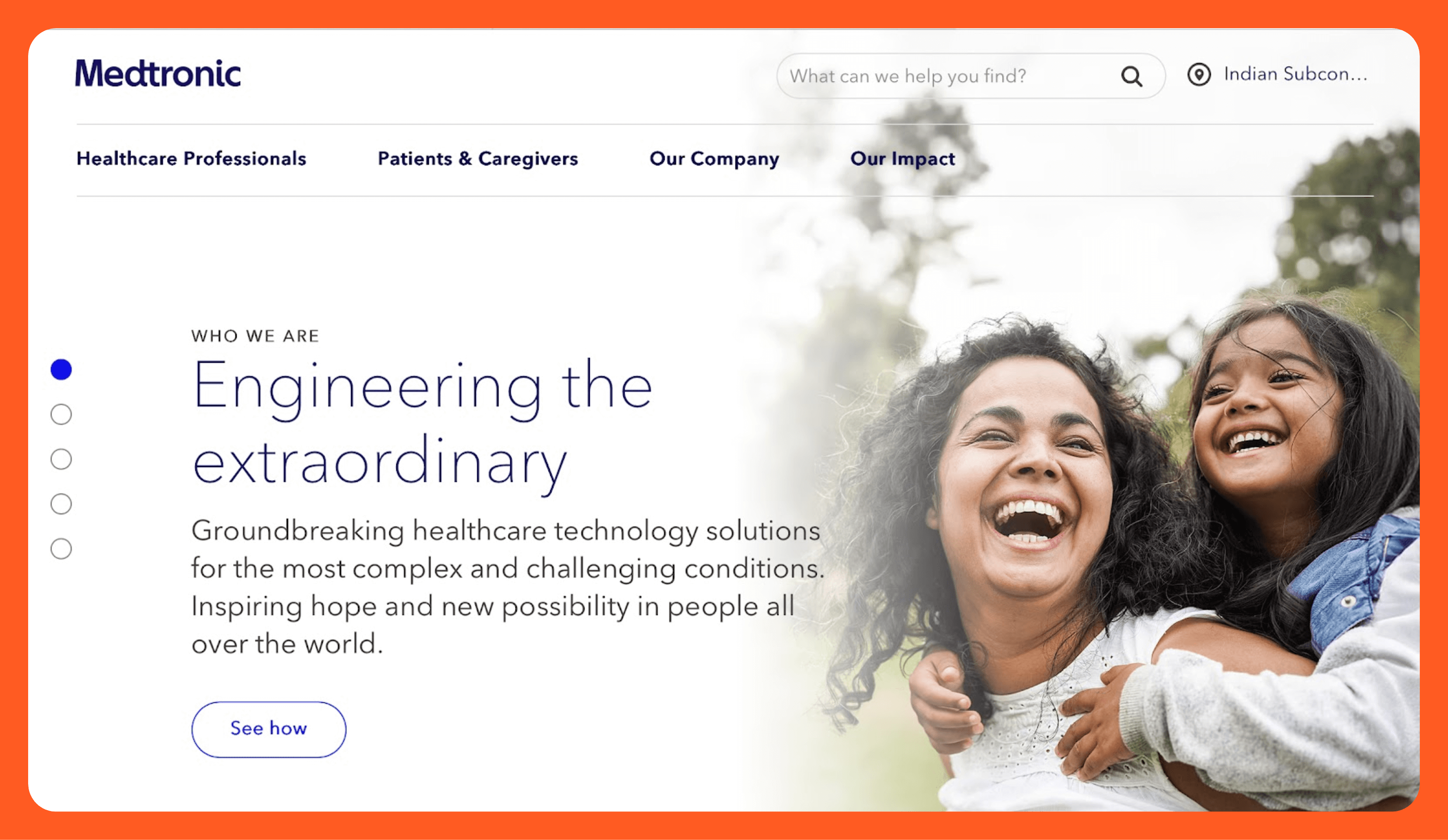
Medtronic entered surgical robotics with the Hugo™ RAS, a modular, mobile‑cart system designed as a lower‑cost alternative to fixed‑tower platforms like da Vinci. Each robotic arm mounts on its own cart, and surgeons operate from an open 3D console. Integration with Touch Surgery Enterprise adds cloud‑based video recording and performance analytics.
Initially launched for urology and gynecology, Hugo is now in use across Europe, Latin America, and Asia. It holds CE marking and other international clearances, though U.S. adoption is still building in 2025.
Hugo’s appeal lies in flexible deployment and pricing; hospitals can position the carts as needed and scale investment over time. This modular approach reflects the industry’s push toward space‑efficient, adaptable surgical robotics.
3. CMR Surgical
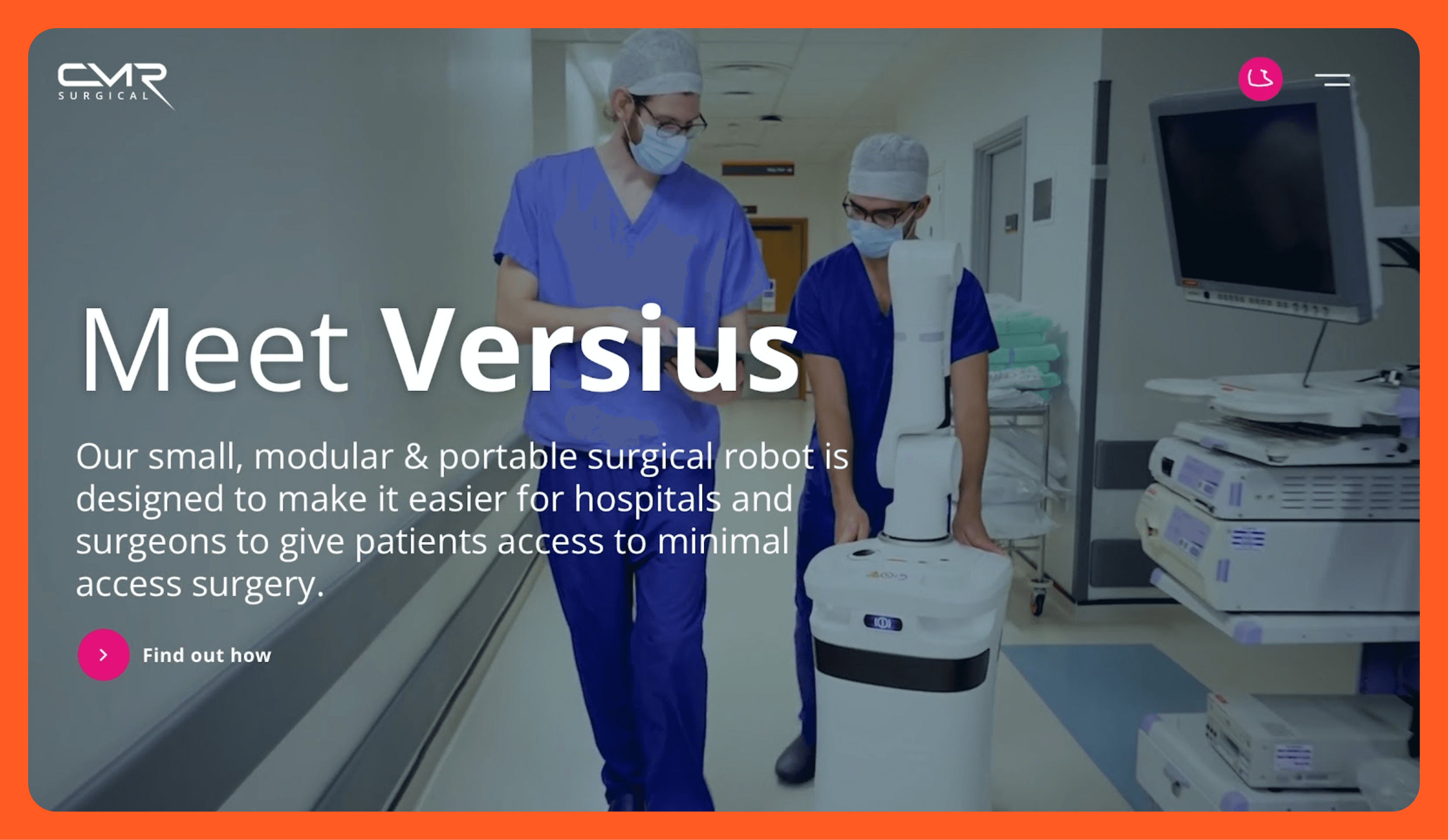
CMR Surgical, a UK‑based company, created Versius to offer a portable, scalable alternative to fixed‑tower surgical robots. Its arm carts can be positioned around the patient as needed, giving hospitals greater layout flexibility and making it well‑suited for small and mid‑sized operating rooms.
Versius is already used in public and private hospitals across 20+ markets, as well as approved in Europe, India, and several Latin American countries. Though FDA clearance is still pending in the U.S.
The system features an open 3D console, HD visualization, and ergonomic hand controls. Quick setup and minimal footprint reduce downtime between cases, making Versius appealing for cost‑sensitive healthcare systems and expanding access beyond large hospital networks.
4. Asensus Surgical

Asensus Surgical takes a different path with its Senhance Surgical System, enhancing traditional laparoscopy rather than replacing it. Senhance adds robotic precision, haptic feedback, and eye‑tracking camera control, giving surgeons a more intuitive, data‑rich environment.
Senhance is most widely used in academic and teaching hospitals because of its lower cost and training benefits. It is FDA-cleared for general, gynecologic, and colorectal surgery, and approved for use in Europe and Asia.
A key selling point is compatibility with existing hospital tools and workflows, easing integration without major infrastructure changes. Asensus also champions “performance‑guided surgery,” where real‑time data helps guide clinical decisions during procedures.
5. Stryker
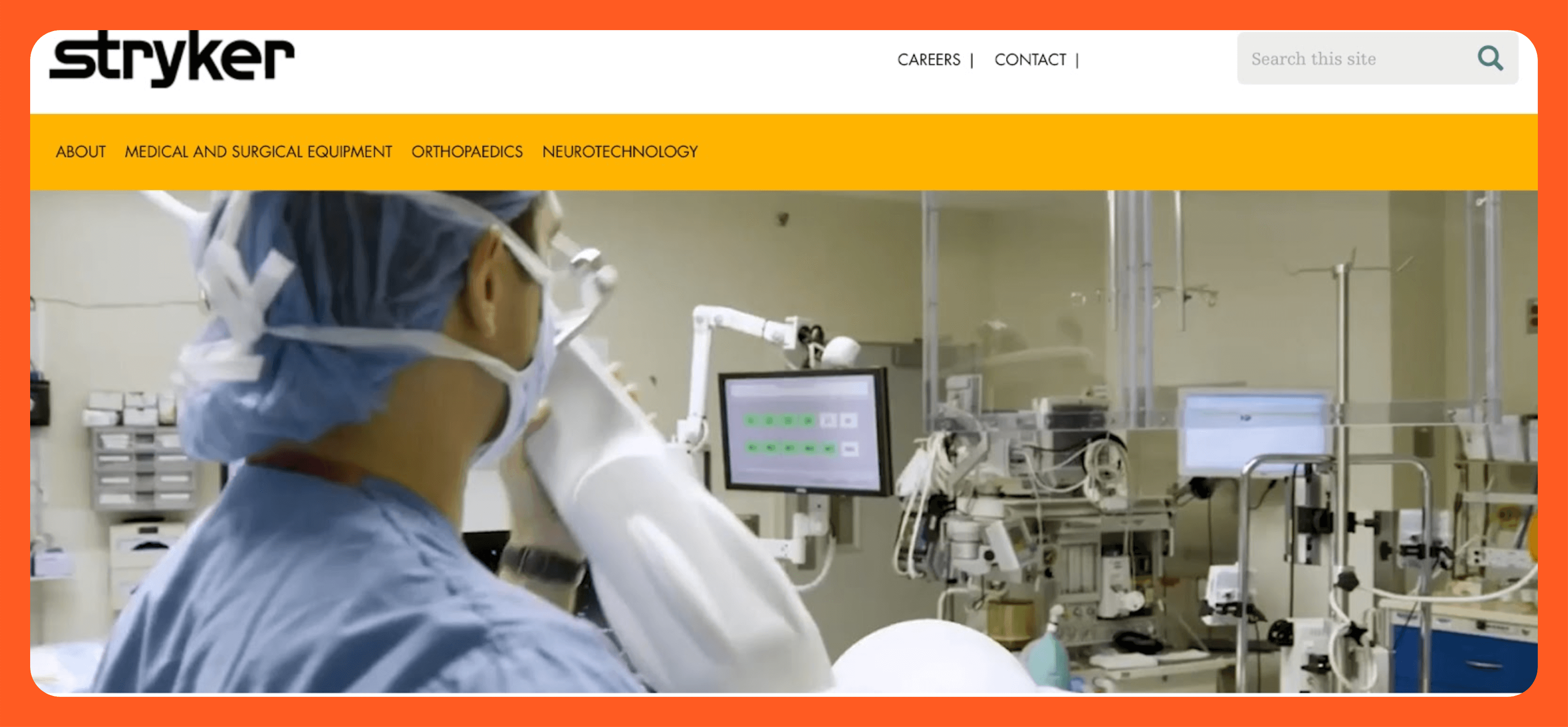
In orthopedic surgery, Stryker leads the field with its Mako SmartRobotics™ platform, purpose-built for joint replacement procedures. Mako is designed specifically for total knee, hip, and partial knee arthroplasty. It uses 3D CT-based preoperative planning and real-time bone modeling to improve precision and alignment.
Mako is designed specifically for orthopedic surgery, unlike general surgical robots such as da Vinci or Hugo. Surgeons can plan the operation, make adjustments during the procedure, and use the robotic arm to make cuts with sub-millimeter accuracy. Hospitals and same-day surgery centers trust it for its precision, consistent outcomes, and faster recovery times.
While it’s not used for soft-tissue procedures, Mako dominates the robotic-assisted orthopedic space. It is often benchmarked when evaluating the best robotic arms for healthcare. Stryker continues to expand with integrations into Stryker’s broader implant and imaging ecosystem.
6. Zimmer Biomet

Zimmer Biomet offers two primary surgical robotics systems: ROSA® Knee and ROSA® Spine. Both are developed to assist with orthopedic and neurosurgical procedures. Like Mako, these platforms enable robot-guided bone preparation using real-time feedback and pre-op imaging, but with a stronger emphasis on digital data integration.
The ZBEdge™ ecosystem combines robotics, smart implants, and data analytics to track patient progress from surgery through post-op rehab. Hospitals using ROSA often cite its intelligent alignment tools and motion tracking as a differentiator. This is especially useful in spine surgery, where precision is critical.
Zimmer Biomet and Stryker compete closely in the joint replacement space, but Zimmer’s pitch focuses more on smart connectivity and long-term outcome tracking, and that’s increasingly important in data-rich robotic workflows.
7. Smith+Nephew

Smith+Nephew developed the CORI Surgical System as a compact, mobile platform for knee arthroplasty. Designed with outpatient surgery centers in mind, CORI is optimized for speed, footprint, and simplicity: the three priorities in smaller surgical environments where large tower systems aren’t practical.
The system combines real-time intraoperative mapping with robotic-guided resection, allowing surgeons to make accurate bone cuts without preoperative CT scans. This shortens pre-surgical workflows and reduces radiation exposure, which is an increasing concern in ambulatory care.
CORI is especially popular in same-day joint replacement programs, where patient turnover and minimal recovery time are critical. It’s part of a broader move toward robotic systems that support outpatient care.
8. Edge Medical Robotics
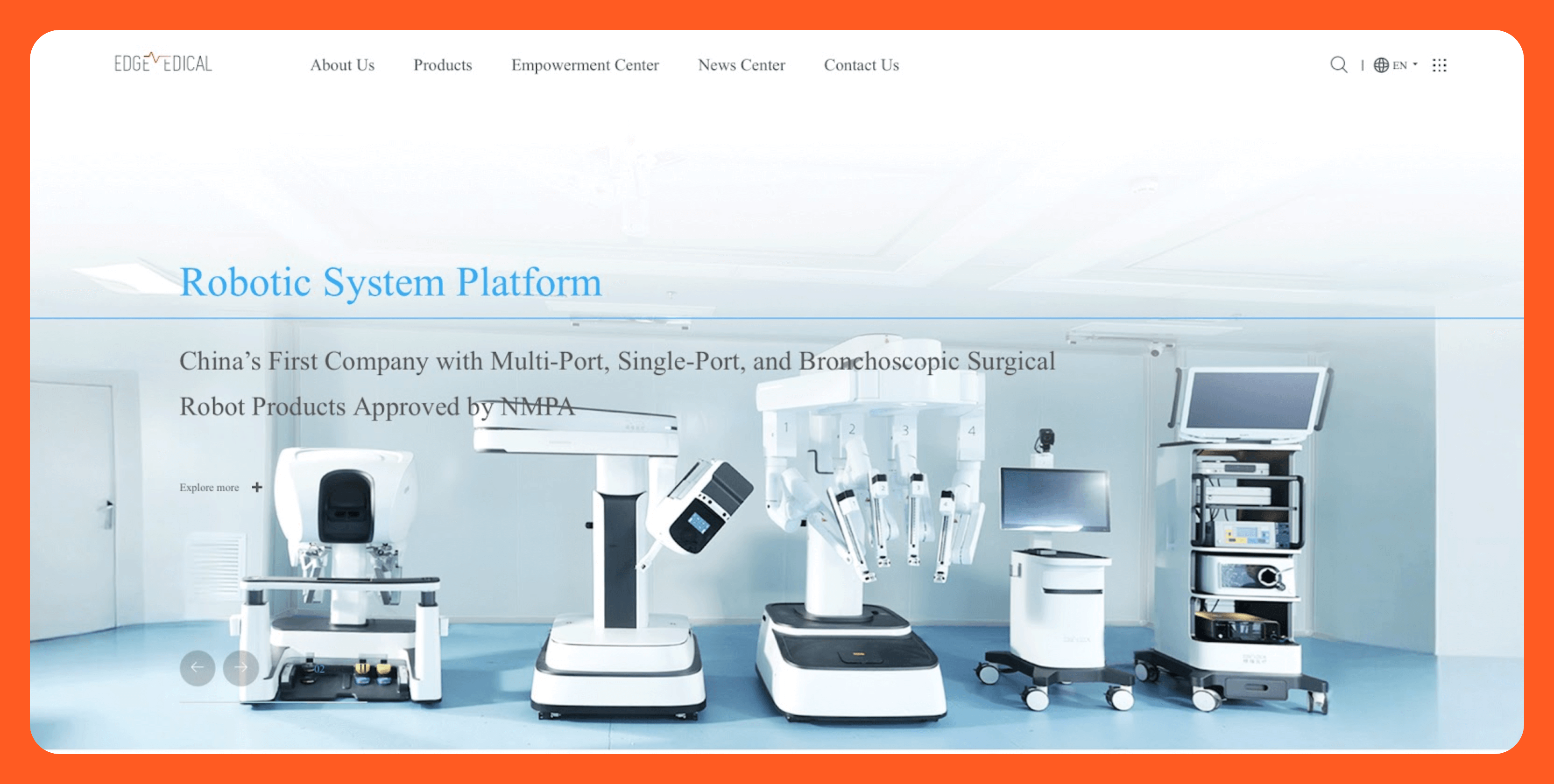
A startup to watch in 2025, Edge Medical Robotics is still in R&D but gaining traction for its AI-powered soft-tissue surgical robots. It focuses on real-time tactile sensing, giving the robot a simulated sense of touch and an intuitive surgeon interface, which is designed to reduce cognitive load during complex procedures.
While not yet commercially launched, the systems combine AI decision support, force feedback, and high‑dexterity robotic arms aimed at general and oncologic surgery.
Edge sits in the fast‑growing AI‑enhanced surgical robotics space, where real‑time data and adaptive control are expected to drive the next generation of intelligent, learning surgical platforms.
Key trends shaping surgical robotics in 2025
Modular over monolithic: Hospitals are increasingly favoring modular systems like Medtronic’s Hugo and CMR Surgical’s Versius. These setups use mobile carts and open consoles that offer greater flexibility in OR layout, faster setup, and lower footprint, unlike fixed-tower designs.
Growth in non-U.S. markets: Adoption is accelerating in Asia, Latin America, Eastern Europe, and parts of Africa, where the cost of da Vinci has historically limited access. Companies offering lower-cost, scalable platforms such as Hugo and Versius are gaining traction in these regions by balancing quality with affordability. In many cases, global expansion is being prioritized over saturated U.S. markets.
Integration of AI and computer vision: Newer systems are embedding AI-powered navigation, target tracking, and vision-based tissue classification into surgical workflows. This is helping reduce reliance on manual inputs and is improving intraoperative decision-making.
These capabilities often rely on real-time data from visual and force sensors, the same technologies driving innovation in robot perception and adaptive motion control.
Data-driven and post-op analytics: Platforms are no longer limited to assisting the surgery itself. Companies like Zimmer Biomet and Asensus are offering analytics dashboards, motion tracking, and performance scoring to help clinicians assess outcomes and refine technique over time.
This aligns with the growing push for value-based care, where outcomes and cost-efficiency matter as much as the procedure.
Publicly traded surgical robotics companies
These are the key players listed on public exchanges as of 2025:
- Intuitive Surgical (NASDAQ: ISRG): Global leader in soft-tissue robotic surgery
- Medtronic (NYSE: MDT): Multi-specialty healthcare giant with Hugo RAS
- Asensus Surgical (NYSEAMERICAN: ASXC): Digital laparoscopy-focused startup
- Stryker (NYSE: SYK): Dominant in orthopedic robotics with Mako
- Zimmer Biomet (NYSE: ZBH): Developer of ROSA systems and data platforms
- Smith+Nephew (NYSE: SNN): Focused on compact outpatient systems like CORI
Each company’s robotics portfolio varies by specialty, but together they reflect how robotics is expanding from niche technology to a core part of hospital infrastructure.
The road ahead for surgical robotics: Final thoughts
Intuitive still leads with da Vinci, but platforms like Hugo and Versius are gaining ground with modular designs and lower upfront costs that fit hospitals outside top-tier U.S. systems.
Surgical robotics is also moving from simple tool control to intelligent assistance, with AI, real-time imaging, and post-operative analytics becoming standard. For hospitals choosing a system, the decision now rests not only on what the robot can do, but how well it fits into everyday workflows and long-term care strategies.
Next steps with Standard Bots
Ready to bring the best automation to your shop floor? It's time for RO1 by Standard Bots. This versatile six-axis robotic arm is the perfect solution for businesses of all sizes, from startups to industry titans.
- Affordable and adaptable: RO1 costs $37K. Get high-precision automation at half the cost of traditional robots.
- Precision and power: With a repeatability of ±0.025 mm and an 18 kg payload, RO1 handles even the most demanding CNC jobs.
- AI-driven simplicity: Equipped with AI capabilities on par with GPT-4, RO1 integrates seamlessly with CNC systems for advanced automation.
- Safety-first design: Machine vision and collision detection mean RO1 works safely alongside human operators.
Schedule your on-site demo with our engineers today and see how RO1 can bring AI-powered greatness to your shop floor.
FAQs
1. Who manufactures the da Vinci Surgical System?
Intuitive Surgical, a U.S.-based company recognized as the pioneer in robotic-assisted surgery, manufactures the da Vinci Surgical System. It remains the most widely used surgical robot in hospitals worldwide.
2. How many da Vinci robots are installed worldwide?
There are over 8,000 da Vinci robots installed worldwide, supporting procedures in more than 70 countries. Intuitive reports that its platforms have been used in over 12 million surgeries.
3. What is the average purchase and maintenance cost of a surgical robot?
The average purchase price of a surgical robot varies by system. A da Vinci system costs between $1.5 million and $2.5 million, depending on the model and configuration.
Annual maintenance, service, and disposable instrument costs typically add $100,000 to $300,000 per year. Newer systems like Hugo and Versius are marketed as more affordable, but total ownership cost depends on case volume and service needs.
4. Which surgical robotic systems have FDA approval as of 2025?
The surgical robotic systems with FDA approval in 2025 include da Vinci (Intuitive), Hugo (Medtronic), Senhance (Asensus), and most orthopedic platforms such as Mako (Stryker) and ROSA (Zimmer Biomet). CMR Surgical’s Versius is still awaiting FDA clearance but is already in use in Europe, India, and other markets.
5. What are the main disadvantages of robotic surgery for hospitals and patients?
The main disadvantage for hospitals is the high upfront and ongoing costs. For patients, risks include longer setup times, conversion to open surgery in rare cases, and limited availability depending on geography. Robotic platforms also have a learning curve for surgeons, which can affect early outcomes until proficiency is achieved.
6. How does Medtronic’s Hugo platform compare with Intuitive’s da Vinci in features and pricing?
Medtronic’s Hugo offers modular deployment, an open 3D console, and more cost flexibility, which makes it appealing for mid-tier and non-U.S. hospitals.
Intuitive’s da Vinci provides a mature, integrated ecosystem with a closed immersive console and more advanced instrument options, but at a higher capital cost. Hugo targets new adopters, whereas da Vinci maintains dominance in high-volume, complex surgical environments.
Join thousands of creators
receiving our weekly articles.











